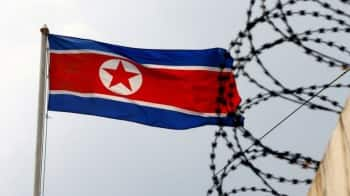On January 5, North Korea fired more than 200 rounds of artillery shells off its west coast, towards South Korea’s Yeonpyeong island. Due to this sudden firing of shells, South Korea ordered its civilians on the island to hide inside bomb shelters and later held its own live fire drills against the North. South Korea has called this sudden firing of shells from the North a “provocative act.”
Details of this incident, according to South Korea:
Image Credit: BBC
According to reports from South Korea, this Friday, North Korea fired more than 200 rounds of artillery shells into the sea near a tense maritime border and towards two South Korean islands.
After this, South Korean military officials ordered the residents of Yeonpyeong and Baengnyeong, the two remote South Korean islands, to evacuate to the area. Yeonpyeong is a tiny island that only measures 3 square miles and is home to more than 2,100 people, according to its local office website. Baengnyeong is an island that is about 18 square miles and has more than 4,900 residents.
Officials and residents from both islands confirmed that they were ordered to evacuate as a safety measure. They were ordered to evacuate to nearby shelters and refrain from doing any outdoor activities, according to the message they received via text. Photos from the island have been released, which show people gathering near designated shelters, some sitting inside while others milling around outside.
Soon, South Korea fired live rounds towards the disputed Northern Limit Line (NLL) as a response to North Korea’s firing shells towards them. However, they did not observe any unusual movements by the North Korean military during this maritime shooting exercise.
South Korean Defence Minister Shin Won-sik has called this move by North Korea “an act of provocation” that could escalate tension and threaten peace on the Korean Peninsula. He also said that their military will be ready to completely wipe out their enemy so that they won’t dare another provocation. His ministry has said that it did not observe any movements from the north while South Korea was holding its drills.
Along with this, the Ministry of National Defence in Seoul said that the South Korean military was closely monitoring the whole situation in coordination with the United States. Lee Sung-joon, a spokesperson for the South Korean Joint Chiefs of Staff, said that Pyongyang’s firings caused no damage to the islands as all the shells landed on the northern side of the sea border.
North Korea’s response to this whole incident:
Image Credit: ABC News
North Korea has responded to this whole incident by saying that its defensive coastal units fired around 192 rounds as a “natural response” to the recent military actions of South Korea’s “military gangsters.” The official Korean Central News Agency (KCNA) of North Korea has reported this. The North has also threatened an “unprecedented strong response” if South Korea continued to make such provocative moves in the future. North Korea has also said that its drills had no impact on the Southern Islands and has said that any other claims from Seoul will only be ‘an attempt to mislead public opinion.’
Tense relationship between North and South on the Korean Peninsula:
Image Credit: CNN
The Korean Peninsula was formerly a single nation that was annexed by Japan in 1910 and has been divided into North Korea and South Korea since the end of World War II on September 2, 1945. Soon after this, the two countries got engaged in the Korean War, which went from 1950 to 1953 and ended in an armistice agreement but without a peace treaty. From that time on, the two countries have technically remained at war.
Yeonpyeong Island, which lies off South Korea’s northwest coast and right by the border with North Korea, has always been a location of hostilities between the two sides of the Korean Peninsula.
Back in November 2010, North Korea launched an attack on the island, resulting in the casualties of two marines and two civilians. In this attack, 15 South Korean soldiers and three civilians were also injured. This sudden attack had prompted an island-wide evacuation, and South Korean forces fired shells towards the North as a reply. Back then, the North also blamed the South for provoking that attack by holding an artillery drill in the waters near Yeonpyeong.
The 2010 clash was one of the most violent clashes between two Koreas at that time. The secretary general of the United Nations back then had called this North Korean attack “one of the gravest incidents since the end of the Korean War.”
In 2018, a military agreement was signed as part of efforts with the United States to contain the threat of war on the Korean Peninsula. However, relations between the two sides have deteriorated since then, with Seoul pulling back from the agreement. Along with this, both sides have stepped up their military exercises and weapon testing.
Leif-Eric Easley, a professor at Ewha University in Seoul, has commented on this whole incident and said that it is not unusual for North Korea to fire artillery into the West Sea during its winter exercises. However, she pointed out that this year’s artillery firings hold a different significance because both Koreas have recently backed away from a military confidence-building agreement. Along with this, she said that the North Korean leader Kim Jong Un’s publicly disavowing any kind of reconciliation and unification with the South has also made matters difficult.
